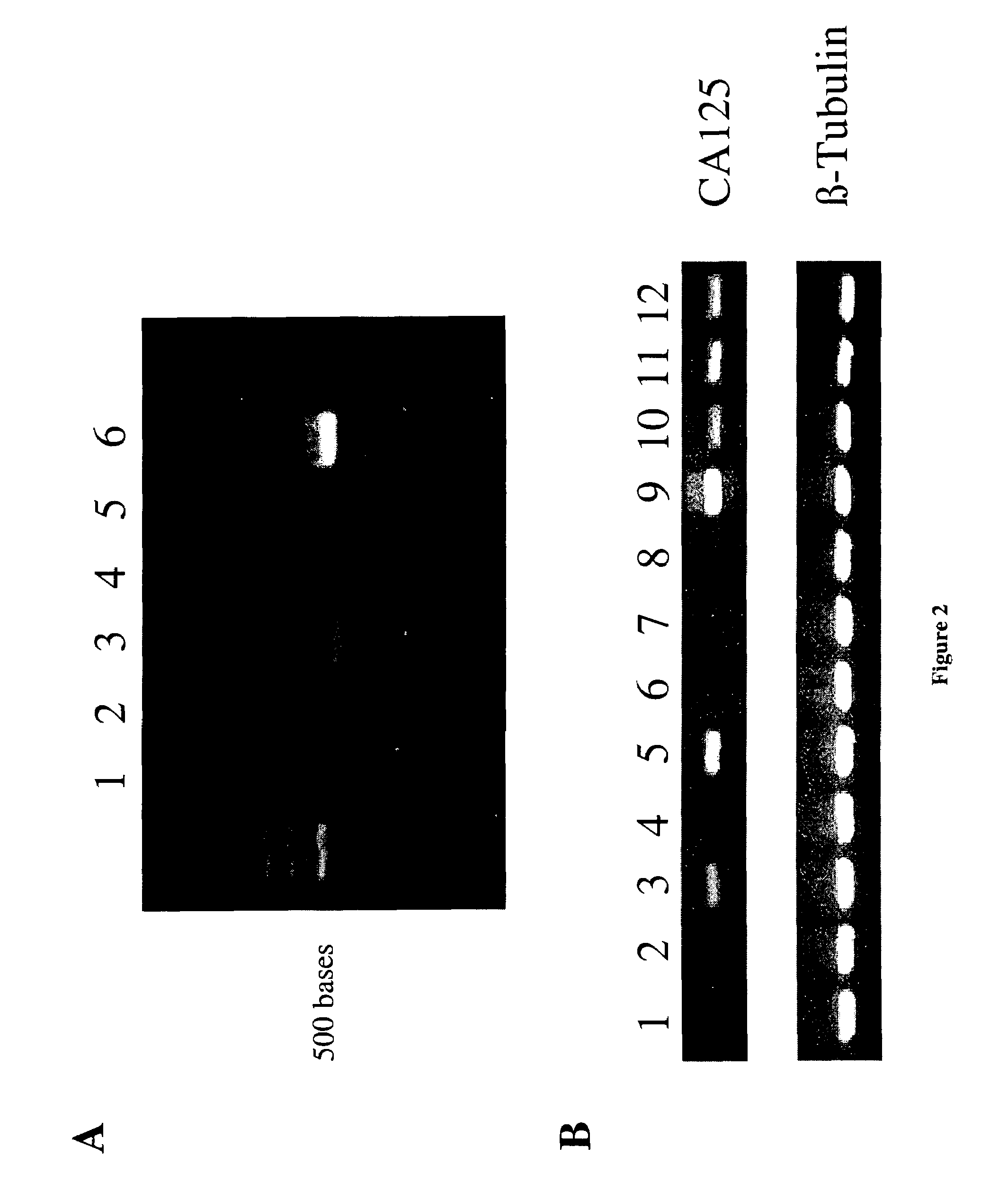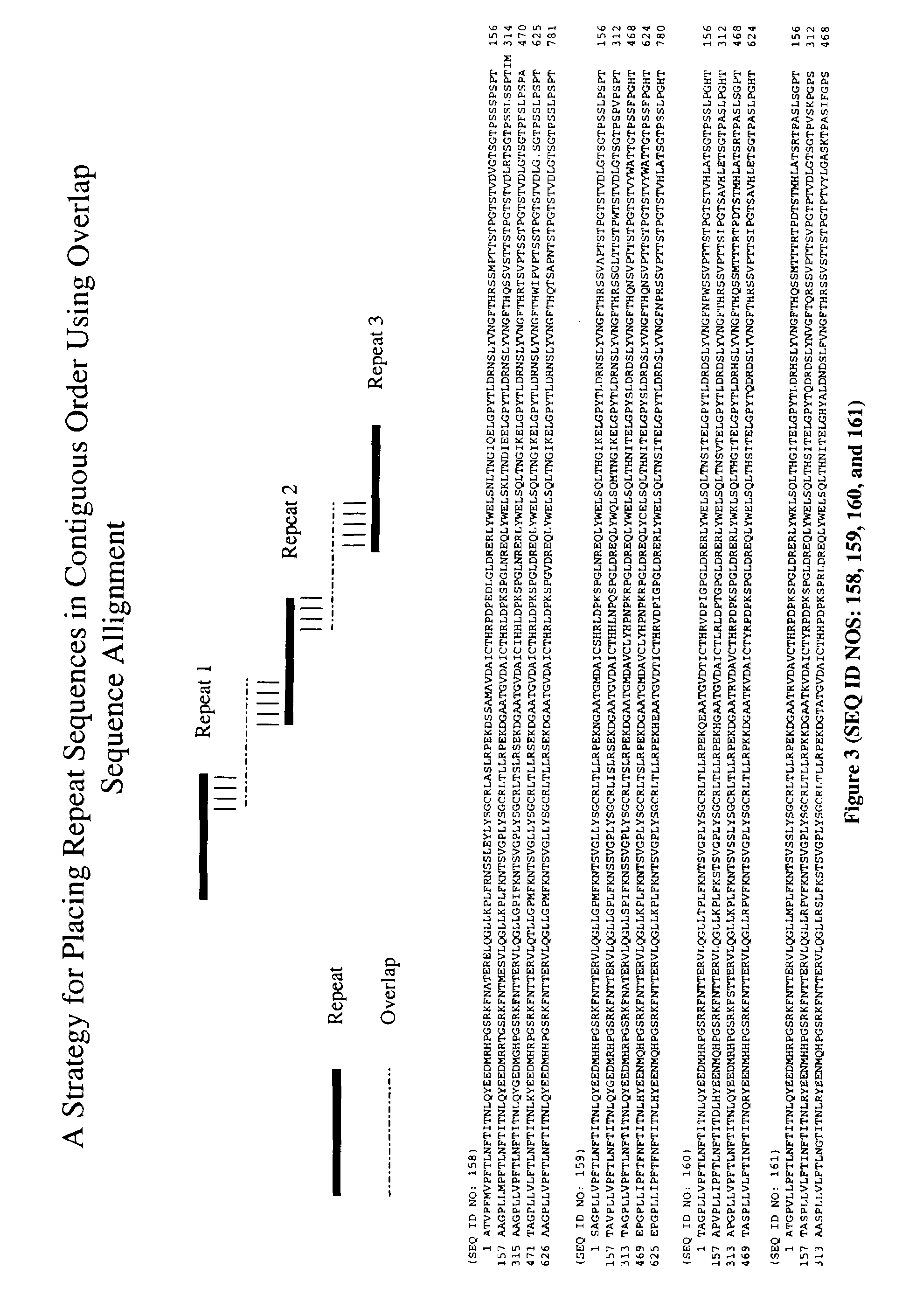Repeat sequences of the CA125 gene and their use for diagnostic and therapeutic interventions
- Summary
- Abstract
- Description
- Claims
- Application Information
AI Technical Summary
Benefits of technology
Problems solved by technology
Method used
Image
Examples
Embodiment Construction
[0048]In accordance with the present invention, conventional molecular biology, microbiology, and recombinant DNA techniques may be used that will be apparent to those skilled in the relevant art. Such techniques are explained fully in the literature (see, e.g., Maniatis, Fritsch & Sambrook, “Molecular Cloning: A Laboratory Manual (1982); “DNA Cloning: A Practical Approach,” Volumes I and II (D. N. Glover ed. 1985); “Oligonucleotide Synthesis” (M. J. Gait ed. 1984); “Nucleic Acid Hybridization” (B. D. Hames & S. J. Higgins eds. (1985)); “Transcription and Translation” (B. D. Hames & S. J. Higgins eds. (1984)); “Animal Cell Culture” (R. I. Freshhey, ed. (1986)); “Immobilized Cells And Enzymes” (IRL Press, (1986)); and B. Perbal, “A Practical Guide To Molecular Cloning” (1984)).
[0049]Therefore, if appearing herein, the following terms shall have the definitions set out below.
[0050]A “vector” is a replicon, such as plasmid, phage or cosmid, to which another DNA segment may be attached ...
PUM
| Property | Measurement | Unit |
|---|---|---|
| Structure | aaaaa | aaaaa |
Abstract
Description
Claims
Application Information
 Login to View More
Login to View More - R&D
- Intellectual Property
- Life Sciences
- Materials
- Tech Scout
- Unparalleled Data Quality
- Higher Quality Content
- 60% Fewer Hallucinations
Browse by: Latest US Patents, China's latest patents, Technical Efficacy Thesaurus, Application Domain, Technology Topic, Popular Technical Reports.
© 2025 PatSnap. All rights reserved.Legal|Privacy policy|Modern Slavery Act Transparency Statement|Sitemap|About US| Contact US: help@patsnap.com



